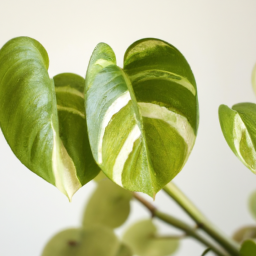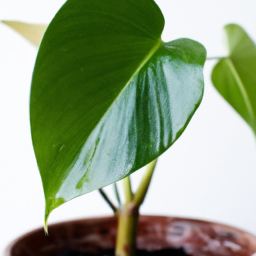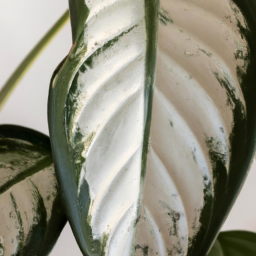
Are you looking to bring some greenery into your home but not sure where to start? In this blog post, we will explore the different types of house plants that are perfect for adding a touch of nature to your living space. From low-maintenance succulents to air-purifying spider plants, there is a wide variety of options to choose from. Whether you have a green thumb or are a self-proclaimed plant killer, there is a house plant out there for everyone. So, let’s dive in and discover the types of house plants that will thrive in your home!
Common Types of House Plants
Welcome to our guide on the common types of house plants! If you’re looking to bring some greenery into your home, you’ve come to the right place. House plants not only add beauty to your living space but also have numerous health benefits. Let’s explore some popular options that are perfect for indoor environments.
Tropical Plants
1. Peace Lily
The Peace Lily is a popular choice for indoor plants due to its elegant white flowers and glossy green leaves. It thrives in low light conditions and is known for its air-purifying properties. Keep the soil consistently moist but not soggy, and mist the leaves occasionally to provide humidity.
2. Spider Plant
The Spider Plant is a great choice for beginners as it is easy to care for and can thrive in a variety of conditions. It has long, arching leaves with small plantlets that dangle from the main plant. Spider Plants prefer bright, indirect light and well-draining soil. They are also known for their air-purifying abilities.
3. Boston Fern
The Boston Fern is a classic choice for indoor hanging baskets due to its feathery fronds and graceful appearance. It thrives in high humidity and indirect light, making it a perfect addition to bathrooms or kitchens. Keep the soil consistently moist and mist the plant regularly to provide the humidity it craves.
Succulents and Cacti
1. Aloe Vera
Aloe Vera is a popular succulent known for its medicinal properties. It has thick, fleshy leaves that contain a gel-like substance that can be used to treat burns and skin irritations. Aloe Vera plants prefer bright, indirect light and well-draining soil. Allow the soil to dry out between waterings to prevent root rot.
2. Echeveria
Echeveria is a diverse genus of succulent plants that come in a variety of shapes, sizes, and colors. They are known for their rosette-shaped leaves and stunning foliage. Echeverias prefer bright light and well-draining soil. Water sparingly, allowing the soil to dry out completely between waterings.
3. Christmas Cactus
The Christmas Cactus is a popular holiday plant known for its vibrant blooms that appear in winter. It thrives in bright, indirect light and well-draining soil. Keep the soil consistently moist during the growing season and reduce watering in the winter to encourage blooming. Christmas Cacti are easy to propagate from stem cuttings.
Foliage Plants
1. Snake Plant
The Snake Plant, also known as Mother-in-Law’s Tongue, is a hardy plant that can thrive in low light conditions. It has tall, upright leaves with striking patterns that add a modern touch to any space. Snake Plants are known for their air-purifying abilities and can tolerate neglect. Water sparingly, allowing the soil to dry out between waterings.
2. Rubber Plant
The Rubber Plant is a popular choice for indoor plants due to its large, glossy leaves and easy care requirements. It prefers bright, indirect light and well-draining soil. Keep the soil consistently moist during the growing season and reduce watering in the winter. Rubber Plants can grow quite large if given the space to thrive.
3. Pothos
Pothos, also known as Devil’s Ivy, is a versatile plant that can thrive in a variety of conditions. It has heart-shaped leaves that come in a range of colors, from green to variegated. Pothos prefer bright, indirect light and well-draining soil. Allow the soil to dry out between waterings to prevent root rot. Pothos are easy to propagate from stem cuttings.

Low-Maintenance House Plants for Beginners
Welcome to the wonderful world of house plants! If you’re new to the world of indoor gardening, you may be wondering where to start. Don’t worry, we’ve got you covered. In this guide, we’ll explore some of the best low-maintenance house plants for beginners. These plants are easy to care for and will thrive in a variety of indoor conditions. Let’s dive in!
Snake Plant
The snake plant, also known as Sansevieria, is a popular choice for beginners because of its hardy nature and low maintenance requirements. This plant thrives in low light conditions and only needs to be watered occasionally. In fact, overwatering can be detrimental to the snake plant, so it’s best to let the soil dry out between waterings. With its striking upright leaves, the snake plant is a great addition to any room in your home.
In addition to its easy care requirements, the snake plant is also known for its air-purifying qualities. It can help remove toxins from the air, making it a great choice for improving indoor air quality. With its sleek, modern look and minimal care needs, the snake plant is a perfect choice for beginners looking to add some greenery to their home.
To care for your snake plant, place it in indirect sunlight and water sparingly. Be sure to use well-draining soil to prevent root rot. With minimal effort, your snake plant will thrive and add a touch of natural beauty to your space.
Pothos
Pothos, also known as Devil’s Ivy, is another great option for beginners. This plant is incredibly easy to care for and can thrive in a variety of lighting conditions. Pothos plants have trailing vines that can be trained to climb or hang, making them a versatile choice for any space. With their heart-shaped leaves and vibrant green color, pothos plants add a pop of color to your home.
To care for your pothos plant, place it in indirect sunlight and water when the top inch of soil feels dry. Pothos plants are forgiving when it comes to watering, so if you forget to water them occasionally, they should bounce back quickly. With their low maintenance requirements and ability to thrive in a variety of conditions, pothos plants are a great choice for beginners looking to add some greenery to their home.
In addition to their easy care requirements, pothos plants are also known for their air-purifying qualities. They can help remove toxins from the air, making them a great choice for improving indoor air quality. With their beautiful foliage and minimal care needs, pothos plants are a perfect choice for beginners.
Succulents
If you’re looking for a low-maintenance plant that adds a touch of desert charm to your home, succulents are the perfect choice. These plants come in a variety of shapes, sizes, and colors, making them a fun and versatile option for indoor gardening. Succulents are known for their ability to store water in their leaves, making them incredibly drought-tolerant and easy to care for.
To care for your succulents, place them in a sunny spot and water sparingly. Succulents prefer well-draining soil to prevent root rot, so be sure to use a cactus or succulent mix for best results. With their unique shapes and colors, succulents add a touch of whimsy to any room in your home.
In addition to their low maintenance requirements, succulents are also known for their air-purifying qualities. They can help remove toxins from the air, making them a great choice for improving indoor air quality. With their fun shapes and colors and minimal care needs, succulents are a great choice for beginners looking to add some personality to their indoor space.

Indoor Plants That Purify the Air
Introduction
Indoor plants not only add beauty to your living space but also have the incredible ability to purify the air. In today’s world, where air pollution is a major concern, having indoor plants that can improve the air quality in your home is a great idea. Not all house plants have air-purifying properties, so it’s important to choose the right ones. In this article, we will discuss three indoor plants that are known for their air-purifying abilities.
Snake Plant
The Snake Plant, also known as Mother-in-Law’s Tongue, is a popular indoor plant that is not only easy to care for but also has excellent air-purifying properties. It is known for its ability to remove toxins such as formaldehyde, benzene, trichloroethylene, and xylene from the air. The Snake Plant is a great choice for bedrooms as it releases oxygen at night, making it a perfect plant for improving indoor air quality while you sleep.
In addition to its air-purifying abilities, the Snake Plant is also a visually appealing plant with long, upright leaves that come in various shades of green. It is a low-maintenance plant that thrives in low light conditions, making it perfect for those who don’t have a green thumb. To care for your Snake Plant, make sure to water it sparingly and place it in indirect sunlight.
Another benefit of the Snake Plant is that it is known to boost productivity and concentration, making it a great addition to your home office or workspace. With its air-purifying properties and aesthetic appeal, the Snake Plant is a must-have indoor plant for any home.
Spider Plant
The Spider Plant is another indoor plant that is known for its air-purifying abilities. It is effective at removing toxins such as formaldehyde, xylene, and carbon monoxide from the air, making it a great choice for improving indoor air quality. The Spider Plant is easy to care for and thrives in a variety of conditions, making it a versatile plant for any home.
One of the unique features of the Spider Plant is its ability to produce “baby” plants, or spiderettes, that dangle down from the main plant like spiders on a web. These spiderettes can be easily propagated to create new plants, making the Spider Plant a great option for those looking to expand their indoor plant collection.
In addition to its air-purifying properties, the Spider Plant is also known for its ability to reduce stress and anxiety. Studies have shown that having indoor plants such as the Spider Plant can have a calming effect on individuals, making it a great addition to any room in your home. With its air-purifying abilities and stress-relieving properties, the Spider Plant is a fantastic choice for those looking to improve their indoor environment.
Pothos
Pothos, also known as Devil’s Ivy, is a popular indoor plant that is not only easy to care for but also has excellent air-purifying properties. It is effective at removing toxins such as formaldehyde, benzene, and carbon monoxide from the air, making it a great choice for improving indoor air quality. Pothos is a versatile plant that can thrive in a variety of conditions, making it perfect for beginners or those with limited gardening experience.
One of the unique features of Pothos is its ability to purify the air while also adding a touch of greenery to your home. Its heart-shaped leaves come in a variety of shades, from dark green to variegated, making it a visually appealing plant for any room. Pothos is a great choice for hanging baskets or trailing down shelves, adding a pop of color to your living space.
In addition to its air-purifying abilities, Pothos is also known for its ability to boost mood and creativity. Studies have shown that having indoor plants such as Pothos can improve overall well-being and productivity, making it a great addition to your home office or workspace. With its air-purifying properties and aesthetic appeal, Pothos is a must-have indoor plant for any home.
In conclusion, indoor plants are not only a great way to add beauty to your living space but also have the incredible ability to purify the air. The Snake Plant, Spider Plant, and Pothos are just a few examples of indoor plants that are known for their air-purifying properties. By incorporating these plants into your home, you can improve indoor air quality and create a healthier environment for you and your family. So why not add some greenery to your home today and enjoy the benefits of these amazing indoor plants?
Recap of this article
So you’ve decided to bring some greenery into your home, but now you’re faced with the overwhelming task of choosing the right house plants. With so many options out there, it can be hard to know where to start. From low-maintenance succulents to air-purifying ferns, there are a wide variety of house plants to choose from.
One popular type of house plant is the snake plant, known for its striking vertical leaves and ability to thrive in low light conditions. If you’re looking for a pop of color, consider a flowering plant like the African violet or peace lily. For those with a busy schedule, low-maintenance options like the spider plant or pothos are great choices. No matter your preference, there’s a house plant out there that will be the perfect addition to your home.
Check Out These FAQs:
Q1: What are some common types of house plants?
A1: Some common types of house plants include pothos, snake plant, spider plant, peace lily, and succulents.
Q2: What are low-maintenance house plants for beginners?
A2: Low-maintenance house plants for beginners include pothos, spider plant, snake plant, and peace lily, as they require minimal care and can thrive in various conditions.
Q3: What are some flowering house plants?
A3: Some flowering house plants include orchids, African violets, Christmas cactus, and peace lily, which can add color and beauty to your indoor space.
Q4: What are some air-purifying house plants?
A4: Air-purifying house plants include snake plant, spider plant, peace lily, aloe vera, and bamboo palm, which can help improve indoor air quality by removing toxins.
Q5: What are some pet-friendly house plants?
A5: Pet-friendly house plants include spider plant, Boston fern, African violet, and Christmas cactus, as they are non-toxic to cats and dogs and safe to have around pets.
Dr. Olivia Green is a botanist with over two decades of experience in indoor plant cultivation. She holds a Ph.D. in Plant Biology and has dedicated her career to researching plant behavior in controlled environments. Dr. Green is passionate about helping plant enthusiasts master the art of indoor gardening through her extensive knowledge and practical insights.


